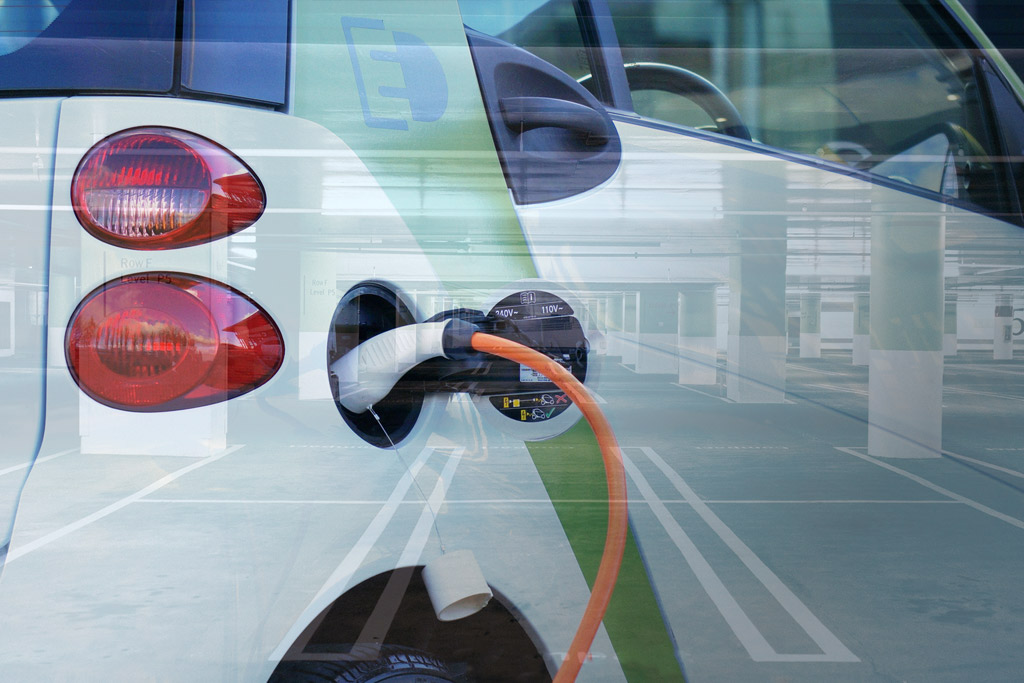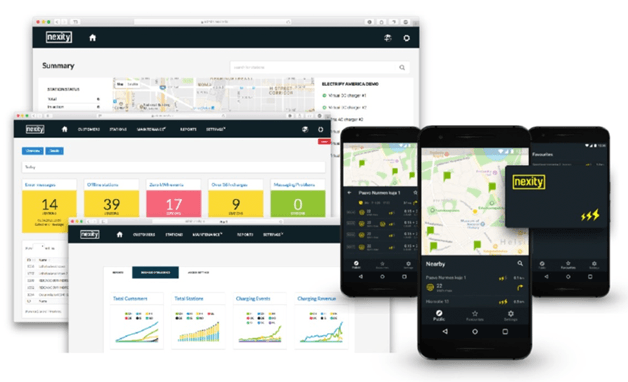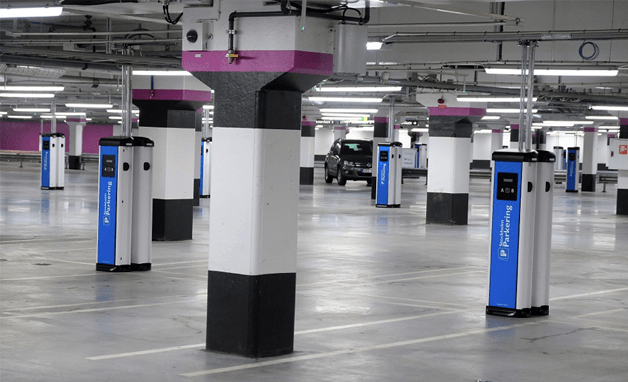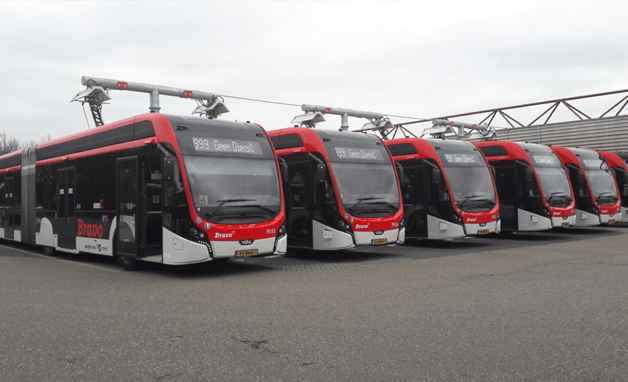Impact of the development of electromobility on the real estate sector (part II)

1. Legal condition
On 27 July 2018, the act of 6 June 2018 took effect, amending, among others, the previous acts regarding biocomponents and liquid biofuels.
That act established the Low-Emission Transportation Fund, the means of which are to be spent, among others, on supporting the construction or development of the infrastructure for charging public transport vehicles using electricity, in particular in agglomerations or resort towns, making use of CNG, LNG, electricity or hydrogen, and on supporting purchases of new vehicles powered with CNG, LNG, electricity or hydrogen.
The act also introduces modifications in the scope of regulations associated with electromobility, including by eliminating the unfortunate solutions which had been adopted earlier, e.g. the need to connect the open-access charging station to the distribution grid. Also, it eliminates the requirement that each charging station be equipped with a measurement and settlement system as defined in the energy law provisions, replacing it with a measurement system.
Under art. 12 of the act, the technical requirements for public utility buildings and multi-family residential buildings with internal and external parking places include the requirement to design and construct these buildings so as to provide the connection power that allows to equip the above-mentioned parking places with charging stations of the power of at least 3.7 kW. The minister responsible for energy will specify, in a regulation, the method of determining the connection power, referred to above, on the basis of the need to gradually increase the number of charging stations and construct a network of such stations so as to make the operation of electric and hybrid vehicles possible.
Both the above-mentioned regulation and the regulation regarding technical requirements for charging stations and charging points, referred to in art. 17 of the act, have not been published yet. As for the technical requirements for electrical installations in buildings, the regulation, which is currently being consulted with the public, regarding technical requirements, includes the following requirements related to electric shock prevention.
The charging point connector is equipped with a device that provides electric shock prevention, referred to in the regulations issued under art. 7.2 point 1 of the Construction Law Act of 7 July 1994 (Journal of Laws of 2018, item 1202), in particular in:
- The main switch, cutting the electricity off all the charging point circuits.
- The residual current device of the nominal differential current not exceeding 30 mA;
- The circuit breaker.
The principle of selectivity of protection mechanisms should be followed. It seems that these provisions are going to be maintained in the final version of the regulation. It is worth noting that many groups (e.g. Stowarzyszenie Nowe Budownictwo) are engaged in developing changes in the technical conditions that should be met by buildings and their location, so that they take into account the installation of electric vehicle charging stations in buildings.
2. Technical requirements for charging station installations in buildings
While waiting for introduction of the above-mentioned changes in regulations, it should be noted, based on engineering practice, that preparation of an electric installation for a charging electric vehicle station is much cheaper at the stage of designing and constructing a building than later on, after the end of investment. It is worth taking into account a suitable reserve of power at the stage of designing.
When balancing the necessary power reserve for devices charging electric vehicles, the manner of using parking spaces should also be taken into account. In the case of an underground parking lot in an office building or residential building, we assume slow charging at night of 3.7-7.4 kW, because the waiting time is relatively long – over 8 hours. For stations used in public places, with the possibility of using them as general-access stations, the power of 44 kW should be reserved, because 2x22 kW stations are most frequently installed in that segment of the market. Although now relatively few vehicles use the 22 kW charging power, the power of the converters installed in vehicles is successively rising, thus reducing the time of charging and increasing the convenience of using electric vehicles.
As for investment costs, parking spaces should be located as close as possible to the switching station, thus allowing to use shorter cables and a relatively smaller cable gauge (e.g. 5x22 mm2 instead of 5x35 mm2). In the case of spaces situated farther away, cable gauges are going to be larger due to voltage drops. In each case, a detailed design with suitable calculations must be prepared.When considering installation of charging stations in existing buildings, one should verify the power reserve in the main switching station and local sub-stations, provide certain parking spaces for electric vehicles and thus specify the maximum power of the charging station.
3. Methods of settling the costs of charging electric vehicles
Currently, there are several methods of settling the costs of charging electric vehicles From the point of view of users of private cars, the most economical method of charging is home charging, in particular using the night tariff. In such a case, the cost of driving 100 km is several zloty (e.g.: Nissan Leaf, 15 kWh/100 km, at the price of PLN 0.50/kWh, the cost of driving 100 km is PLN 7.50). In the case of using public stations, the cost of driving rises: example prices for 1 kWh are between PLN 1.19 (using alternating current) and PLN 2.29 (fast charging using direct current).
The charging process is authorized using an RFID card or a mobile app in a mobile phone that connects to the charging point management and monitoring system. RFID cards may be used locally, for one real property, although what is becoming more and more popular is using a mobile app that allows not only to authorize a user in a charging point, but also to view the available points on a map, to select one of them and to permanently monitor one’s account and the costs related to charging.
Furthermore, some mobile apps provide the unique opportunity of using not only the charging points provided by providers of the charging service, being the owner of the given app, but also to efficiently use any charging point in the global grid on the basis of the so-called charging roaming service. In the case of using a local point (in an office building or a hotel), a room card may also be used for authorizing the vehicle charging process. After registration, employees, tenants or guests may use their RFID cards to charge their vehicles. On the other hand, the above-mentioned card may be replaced with a mobile app, in which the same employee, tenant or guest may have an automatically defined charging point available for them on special terms (for free, based on a special tariff, etc.).
In the need to charge electric vehicles in multiple places, it is convenient to use a mobile app being an element of a complex system for monitoring and managing the charging point network, which allows several methods of payment for a charging session (subscription, pre-paid, single transactions).
From the point of view of a building owner, the use of a management system has multiple benefits for everyday operation of a charging station:
- All the charging processes are recorded in a central system and may be reviewed by the building owner, or by the end user, from a customer portal available for both of them at any time.
- The building owner will generate, from the system, a monthly report on the processes of charging and any and all the costs charged to all the users.
- The owner, using the administration panel, will specify the price rates available in the given charging station, and will specify the basic parameters of availability of the charging station.
- The cost-bearing users (e.g. employees with private electric cars or building tenants) will receive a monthly summary of the charging processes and of the costs of electricity, on the basis of which the building owner will issue an invoice to the respective tenants or employees.
- If the building owner decides to allow external customers to use the charging stations, the system may automatically charge fees on account of charging, from registered external users, to the benefit of the building owner.
- The building owner will automatically be reimbursed for the specified costs of electricity incurred on account of providing the service of charging in its area.
- The use of reliable systems for managing and monitoring the charging station network, covering a significant number of charging points, will allow to develop the new or, for some, additional branch of the business related to the electromobility market while meeting the requirements of the act on electromobility and alternate fuels which, in the scope of functionality, will be guaranteed by the system for monitoring and managing the charging infrastructure.
Using a platform, the owner will be able to analyze multiple statistics concerning the operation of charging points.

Fig. 1. Statistics visualizations from the management system and user panel, for smartphones. Source: NEXITY The EV Charging Company | www.nexity.io
4. Contemporary trends
When observing the development of distribution networks in Western Europe, we have noticed a dynamical introduction of smart energy counters, including bidirectional ones. With that function, some cars support the V2G (vehicle to grid) protocol, with which it is possible to receive energy from the grid or transfer energy to the grid. In this way, the large scale of electric cars makes them a dissipated energy warehouse which is beneficial for the power system and performs the DSM (demand-side management) functions.
Such activity allows to affect a temporary demand for electrical energy (power) in the system for the purpose of reducing the peak demand and transferring the loads away from the peak demand – DSR (demand-side response) – e.g. to the night low. From the point of view of the system, such evening of the load characteristics brings about measurable benefits, which translates into the compensation paid to the owners of vehicles who make them available in the system. Such mechanisms are used, for example, in Denmark and Great Britain. Maybe, in the future, such tendencies also reach Poland, helping to balance out the power market with the ever-increasing share of RSEs.

Fig. 2. Parking lot for electric vehicles in Stockholm. 168 charging stations. Pic. Circontrol
Another tendency noticeable in the countries with a more developed e-mobility market, is the increasing number of charging stations, including fast and ultra fast ones – for the purpose of improving the comfort of using electric vehicles. Very significant charging power (300-600 kW) is also used for charging electric buses. With EU subsidies, used by multiple European countries, including Poland, more and more cities replace their diesel-engine fleet with electric vehicles. SPIE Polska has been participating in development of the infrastructure for charging electric vehicles in the full range of power, from the devices of the power of 3.7 kW to bus charging stations with pantographs of the power of 450 kW or even 600 kW, based on technical specification. Changes are also occurring in the manner of using cars. People more and more often “use” rather than “possess”.
The number of companies offering car sharing services using electric cars in Western Europe and in Poland has been rising. To sum up, it should be emphasized that electromobility has been one of the most future-oriented areas of development of modern, innovative economy, offering both measurable economic benefits and environmental ones, thus improving the general comfort and quality of life, in particular for inhabitants of cities.

Fig. 3. HELIOX/E.URBAN electric bus charging terminal in the Netherlands
The article was published on the Real Estate Manager website. Its origial version is avaliable here
Follow Us
TRENDING POST
Tags
- Proptech (45)
- Real Estate Services (22)
- IoT (17)
- Singu Tenant App (16)
- Facility Management (14)
- Events (7)
- AI (6)
- ESG (6)
- Smart Security (5)
- BIM (4)
- Guest Management (3)
- 2019-03-06 (2)
- 2019-04-02 (2)
- workplace (2)
- Digital Twin (2)
- VR (2)
- Blockchain (2)
- retail (2)
- 2019-04-06 (1)
- 2019-04-03 (1)
- 2019-03-12 (1)
- 2019-05-14 (1)
- 2019-04-04 (1)
- 2019-03-15 (1)
- 2019-06-04 (1)
- 2019-06-25 (1)
- coworking (1)
- CMMS (1)
- Construction (1)
- 2019-04-03-04 (0)






